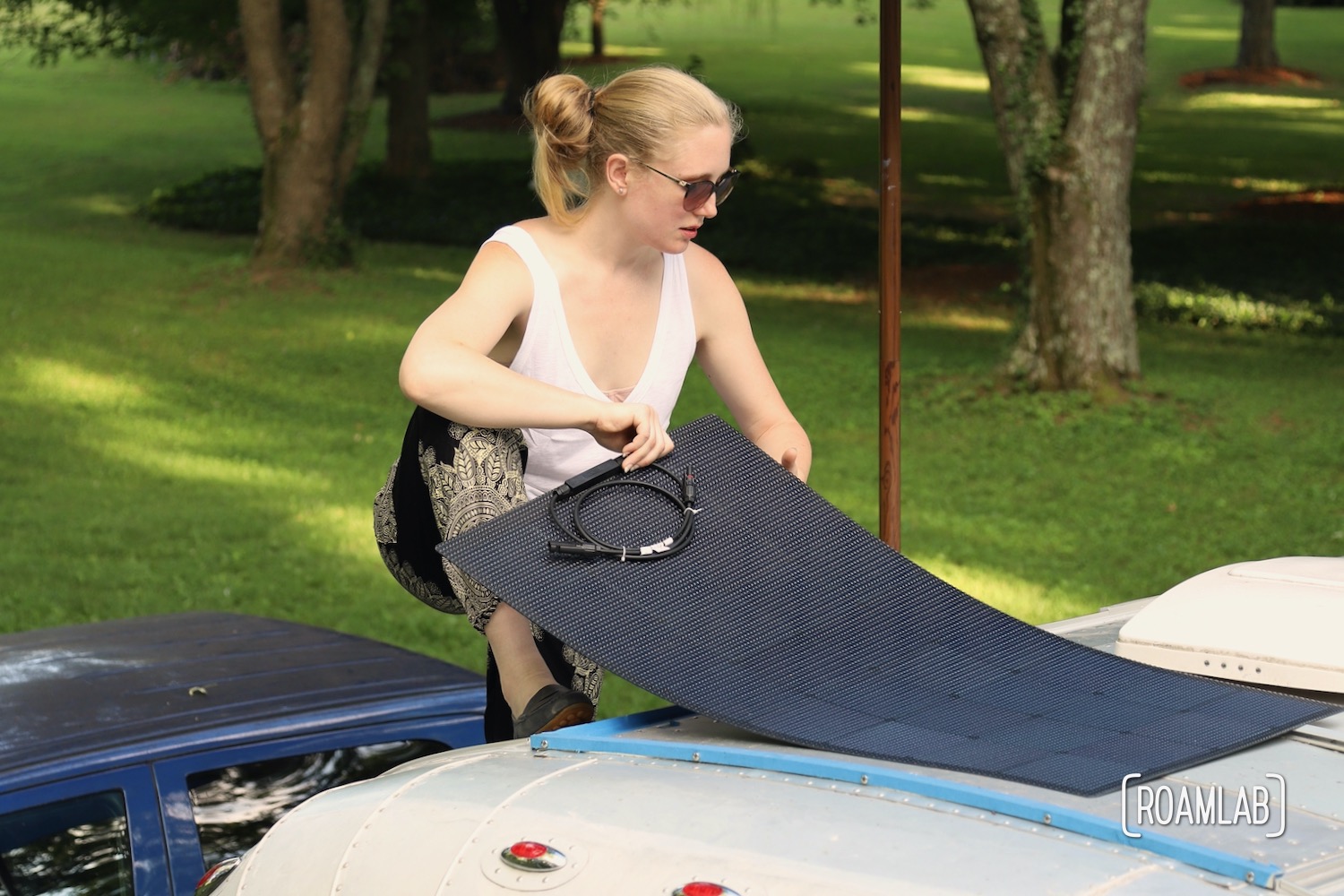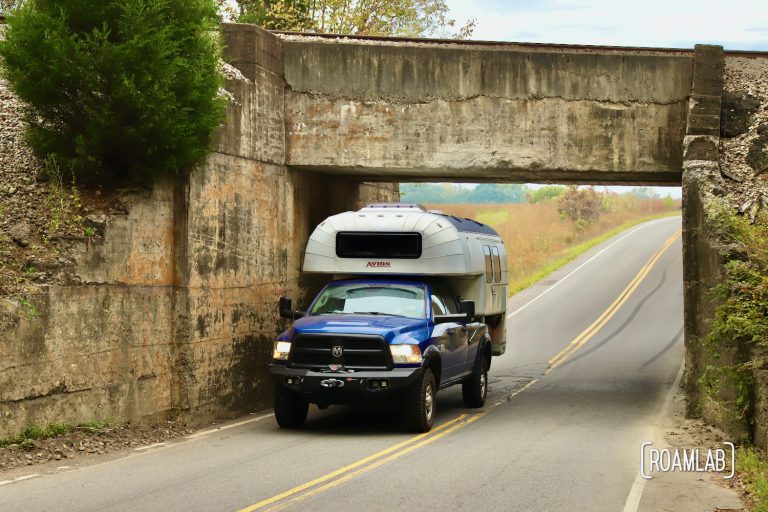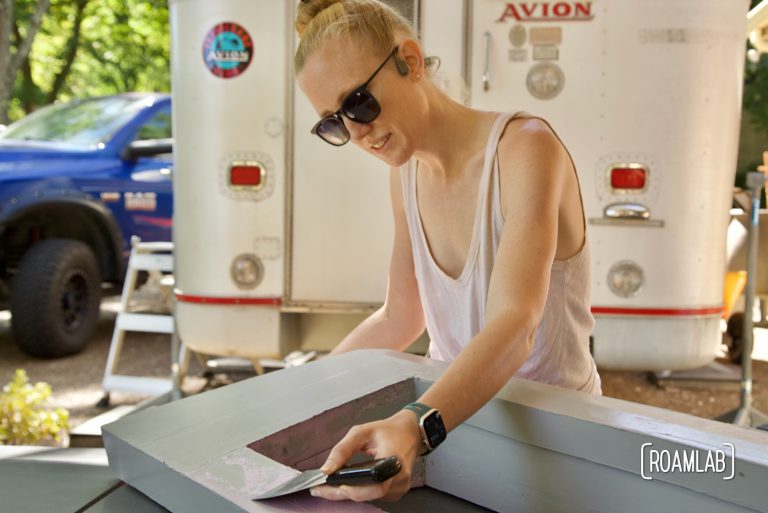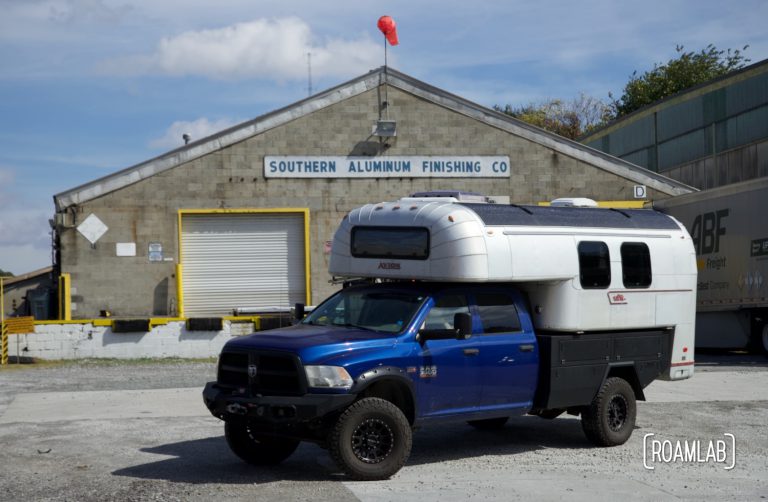Solar panels seem simple enough. You screw a few on the RV roof, hook them up to the battery, and you’re good to go. Right? Not quite. There are a lot of variables to take into account. Variables that are constantly changing as technology advances and what was cutting edge becomes a common consumer feature. There is no single, obvious solar panel design for RV roofs. Selecting the ideal panel is a balancing act between budget, energy demands, and available space for solar panels.
We have spent a lot of time looking at different configurations of solar panels. Do we want four 100W panels and four 50W panels? Should we order through a specialized vendor where we can get exactly what we want but replacements may be impossible? We even seriously considered building our own panels, similar to our DIY lithium batteries. But all of this angst comes down to one core question: how can we optimize the amount of solar power we can collect for our truck camper? It’s a big question but one that gets simpler as we break down the specific variables that we can choose between when shopping for solar panels.
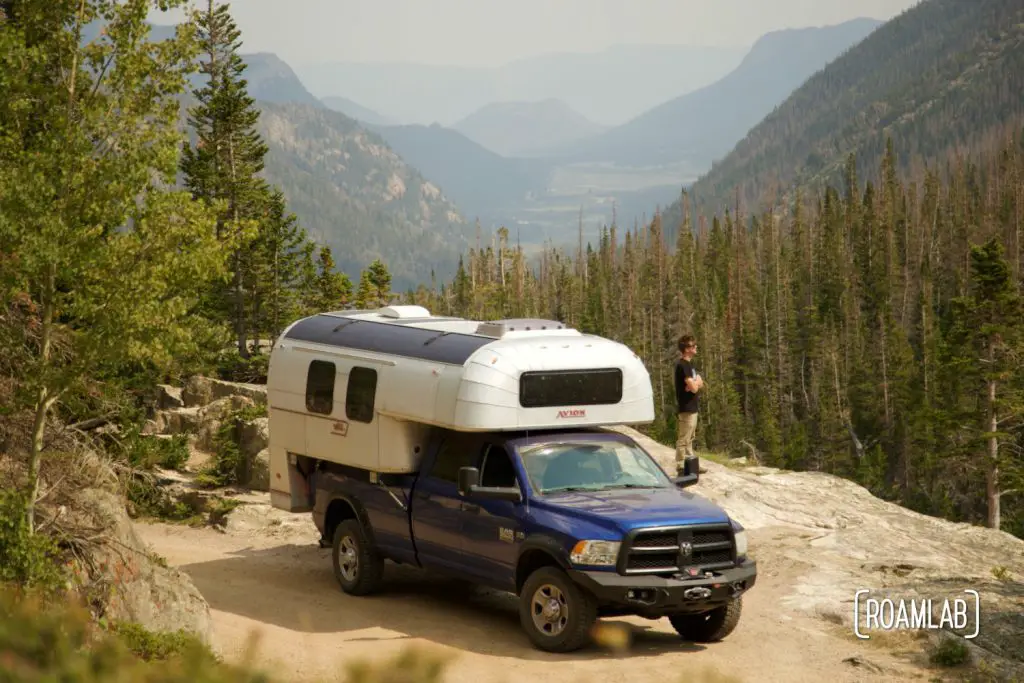
Mounted vs. Unmounted Solar Panels
There are two main ways to travel with solar panels: mounted to the roof of a camper or unmounted. Unmounted solar panels are kept inside the camper or towing vehicle while traveling and then set up in a sunny place to capture the solar power. With this setup, solar panels are protected from tree branches and we can park in the shade while enjoying power from the sun. In the heat of summer, the difference between power generated by mounted solar panels and power consumed by air conditioning when parked in the sun could be negligible compared to the power saved by parking in the shade.
Yet, unmounted solar panels mean that we sacrifice the most precious commodity in our truck camper: space. We have very little storage space as it is and the amount of space it would take to store solar panels in the quantity needed to power our rig is too much for us. In addition, unmounted solar panels are useless on travel days when they are stored away while roof-mounted solar panels can collect power while on the move.
Each has its place…
Overall, unmounted solar panels can be incredibly handy, especially for casual campers with extra space who aren’t ready to make the commitment of installing panels into their roof. Unmounted panels are modular. They can be used for campers, tents, and plenty of other casual outdoor applications. But for us, in our small truck camper and with space at a premium, mounting solar panels is our best option.
| Pros | Cons | |
|---|---|---|
| Unmounted | Protected in transit Easily adjustable to maximize the sun exposure Can park the camper in the shade while collecting solar energy Easy access | Storing panels in transit Setup and breakdown every time you move Can’t use in public areas like parking lots |
| Mounted | They are always out to collect solar rays No setup or breakdown required | Have to park in sun to collect power Can only collect solar power in places the camper can reach Have to access the roof to clean panels when they are obscured by dirt, snow, etc. |
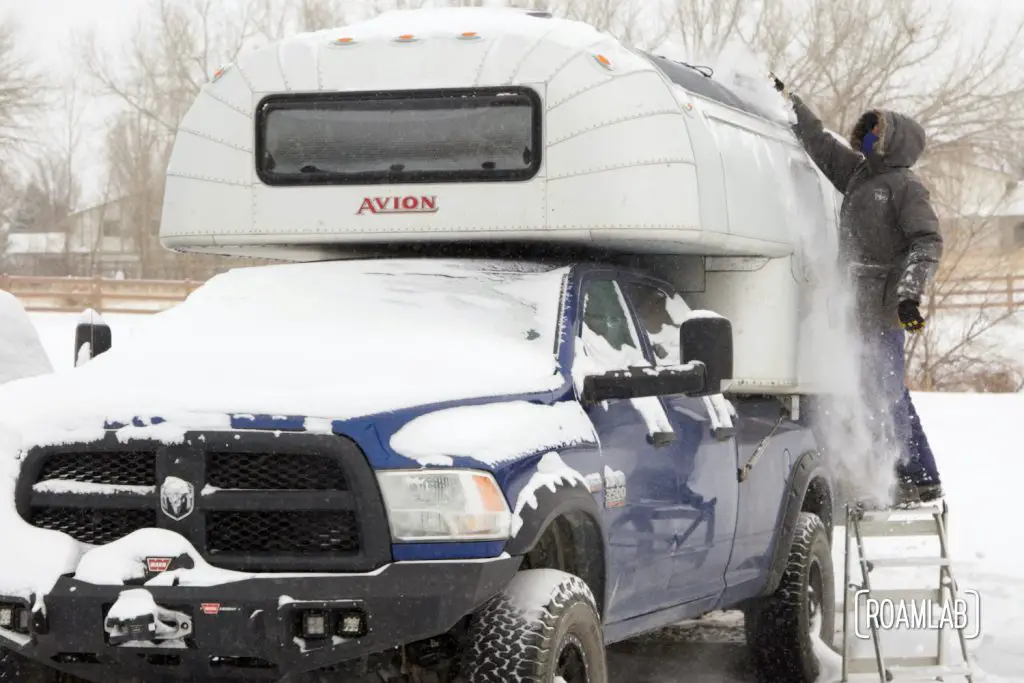
Flexible vs. Solid Solar Panels
Most solar panels on the market are solid. These durable models are common on house roofs to car park shades. But they are heavy and bulky, which has driven a demand for light, thin, and flexible solar panels in applications where weight and flexibility are key. But these flexible panels come at their own cost.
The debate between flexible and solid panels has raged for years. While there are many nuances, the general gist is that solid panels are more robust and reliable while flexible panels allow more applications due to their flexibility but are more delicate and lose efficiency when overheated. While these nuances remain, the gap in efficiency between flexible and solid panels is narrowing. Flexible panel technology is becoming more robust but still comes at a higher price point. Even so, given our curved roof, we opted for flexible panels.
| Pros | Cons | |
|---|---|---|
| Solid | Durable Longer life expectancy on average | A bulky and thick frame sticks out on the roof Heavy |
| Flexible | Can bend over curved surfaces Light and thin | More sensitive to overheating and lost efficiency Shorter life span More expensive to get a panel of similar durability to a solid panel |
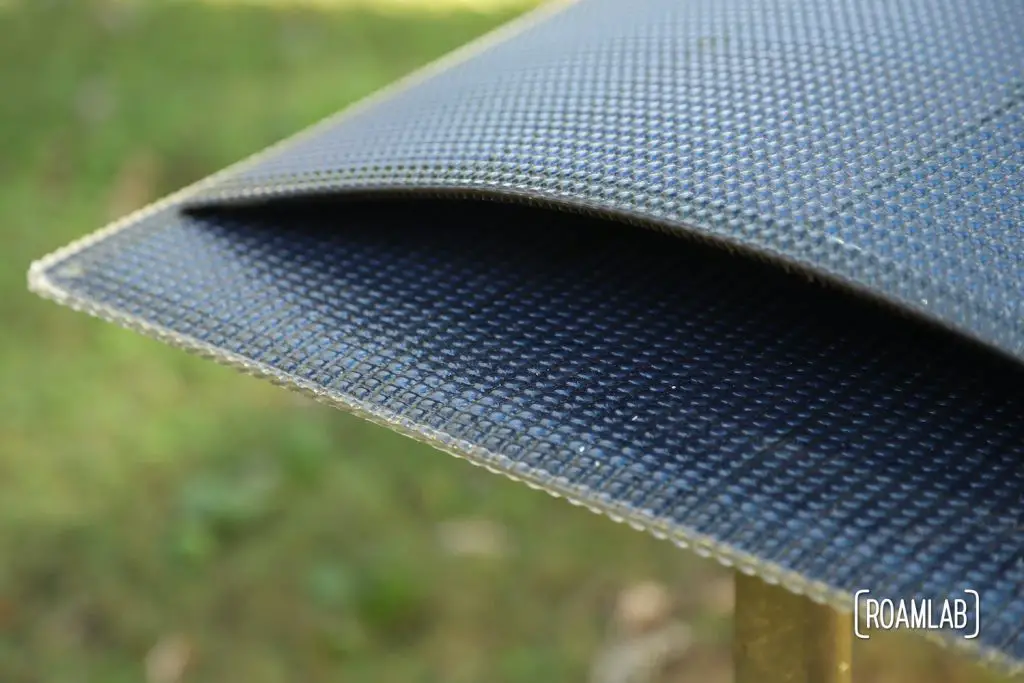
Manufacturers
There are a lot of things we research where the difference between the high-end product and the low-end product is nominal. Solar panels are not one. There is a dramatic difference between the efficiencies and life expectancy of each brand. And every watt counts. With all the work we have done on our Avion, we don’t want to install some cheap solar panel that we will have to replace in three years. And with our limited space for solar panels, we want to get as many watts per square inch as possible. We want the best and, at the time of this post, there is a clear winner in this arena.
SunPower is generally recognized as one of the most efficient solar panels produced. As would be expected, higher quality panels are more expensive. But, for anyone making a large investment in solar, the quality of the panel is one area to invest in. So it might seem like, when it comes to manufacturers, there is one clear choice. Not quite.
Solar Cells
SunPower produces more than just solar panels. They also produce solar cells and distribute them to secondary manufacturers who use the SunPowered cells in their own panels. Thus, many vendors can offer high-quality solar cells in their panels. Renogy, one of the popular domestic manufacturers includes the option of SunPower solar cells for an additional (but justifiable) fee.
We make a point of selecting a manufacturer that will use SunPowered cells in our panels.
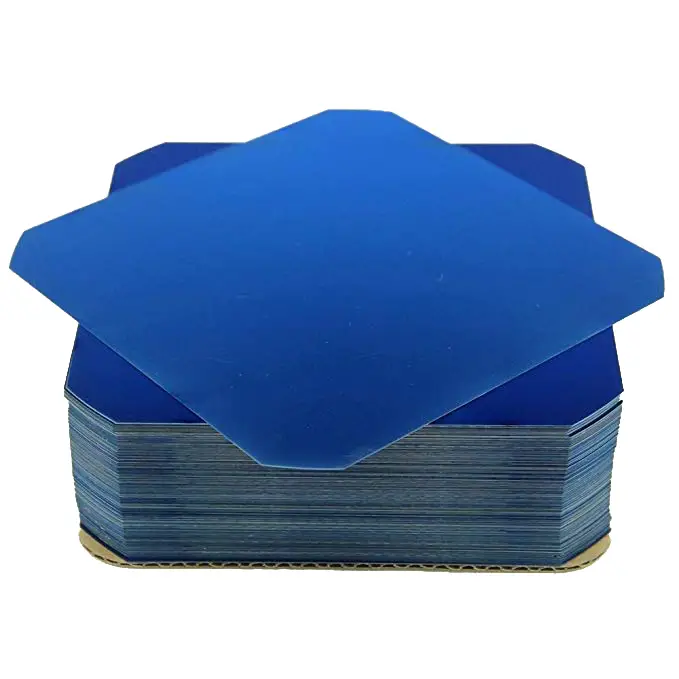
A Side Note: There are different classifications of cells. In the case of Sun Powered. The top performing cells are distributed as Maxeon cells while cells with too many imperfections in the course of the manufacturing process are sold under lesser labels. Of course, the lower quality cells are sold cheaper, so it’s worth noting that, even among SunPowered cells, there is a range in quality.
Dimensions
An average solar panel is around 65 inches by 39 inches. The exact measurements can vary by manufacturer, depending on how much space is between the cells and the border of the panel. But the general dimensions are restrained by the dimensions of the cells themselves. These standard panels are 8 cells by 4 cells and put out somewhere between 100 and 120 watts, depending on the efficiency of the cell. This is convenient as it means that panels can be relatively easily interchanged. But not all panels follow this model.
In shopping for solar panels, we come across higher and lower wattage panels. This variation is generally due to the number of solar cells fit onto a single panel. There are applications where nonstandard solar panels are advantageous, but in the interest of easy replacements, we prefer to buy solar panels with the standard dimensions.
Junction Box Placement
The junction box can be an element of the solar panels that is often taken for granted. This is the location where the main positive and negative wires exit the panel to connect to the rest of the electrical system. Most often this is positioned on the top center edge of the panel where the wires can be accessed above the panels, as ours are. It’s worth noting, though, that panels also can come with the junction box in other locations as well.
One common alternative is for the junction box to be positioned under the panel so that the wires are not exposed to the surface. The wires can enter the roof of the camper and travel through the inner walls rather than be exposed to the elements. This is pretty awesome…if you have no intention of ever removing the panels. But panels are finicky and will need replacing at some point, so we opt for accessibility over the streamlined appeal of hidden wires.
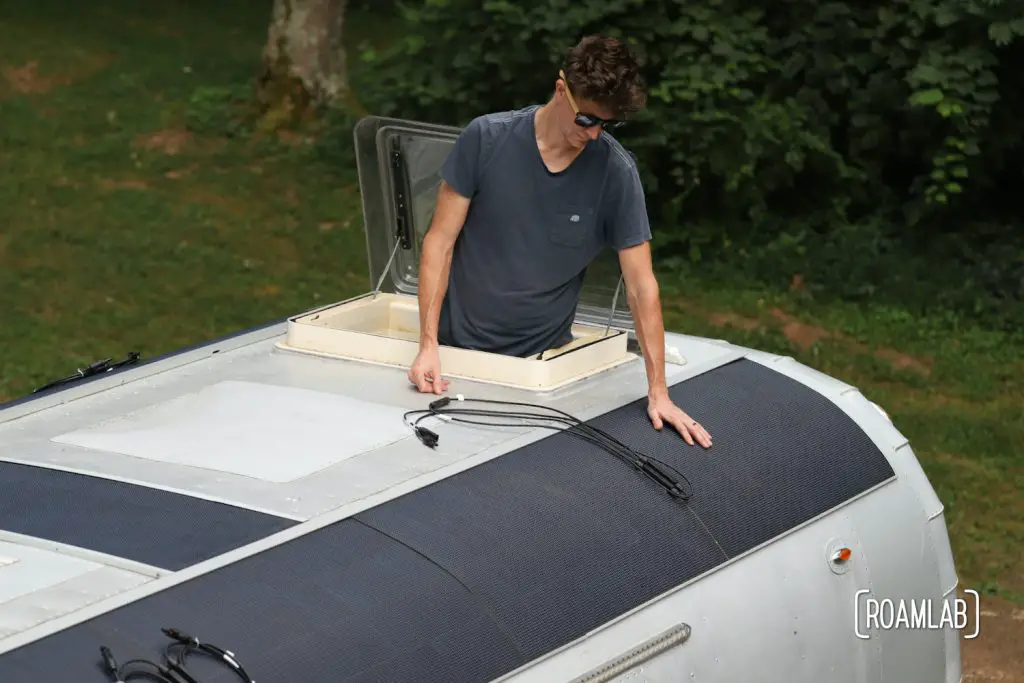
Laminate
Most solar panel manufacturers do not highlight the material used for sealing the solar cells on the panel. It’s generally a fairly standard, clear plastic laminate. But recently, we encountered Ethylene tetrafluoroethylene (ETFE) laminate, a plastic designed for the aerospace industry in the 1970s and now common in marine applications. This durable, non-skid material is meant for the harshness of the elements and is used in applications where people may walk on the panels. While we don’t intend to be walking in stilettos on our solar panels as depicted in the marketing material for these panels, we do have to crawl over our panels on occasion to clean their surface and perform other maintenance tasks. It’s more expensive and took us a while to find a manufacturer, but we consider ETFE laminate to be well worth the trouble.
| Pros | Cons | |
|---|---|---|
| Standard Laminate | Inexpensive | Less resilient |
| ETFE laminate | High corrosion resistance Non-skid Durable construction protects against damage from tree branches and other obstacles Withstands a wide temperature range low friction coefficient so dust and dirt do not stick | More expensive |
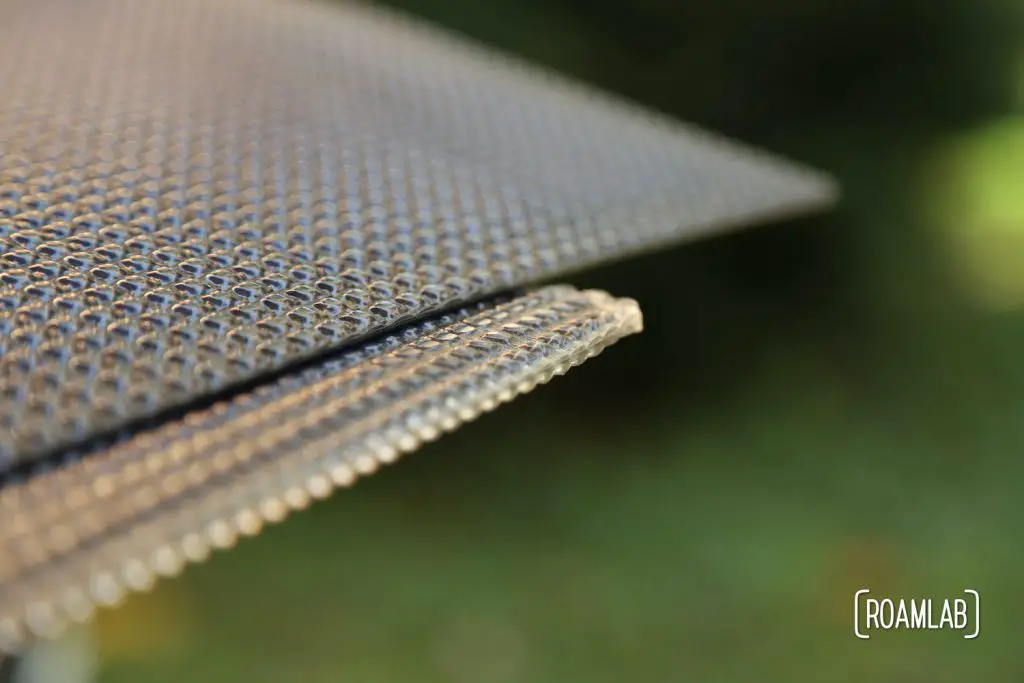
Our Solar Panels
Choosing the right solar panel is a matter of context. In our case, we have a 1970 Avion C11 truck camper and we spend a lot of time off-grid. So, we want as much solar power as we can fit on the roof of our camper. We dive into the quantity and placement question in our post How Many Solar Panels Should I Buy For My Truck Camper? But in this post, what matters, is that we can fit the most solar panels on our roof if they are flexible so that they can follow the curve of our Avion’s roof. So, we select mountable, flexible, 21.25×41.75-inch solar panels with SunPower cells and a junction box on the center top.
The Specifications of our Solar Panels
| Electrical Parameters | |
|---|---|
| Cell Type | SunPower Cell |
| Cell Efficiency | 23.7% |
| Peak Power [Pmax] | 110Wp |
| Power Tolerance Range [%] | -3% to +3% |
| Max Power Voltage Vmp [V] | 18.56 |
| Max Power Current Imp [A] | 5.93 |
| Open Circuit Voltage Voc [V] | 21.9 |
| Short Circuit Current Isc [A] | 6.4 |
| Maximum System Voltage [VDC] | 1000 |
| Dimensions [in] | 21¼x41¾x⅑ (540x1060x3mm) |
| Operation Temperature [°F] | -40 to 203°F (-40/+85°C) |
| NOCT [°F] | 113±3½°F (45±2°C) |
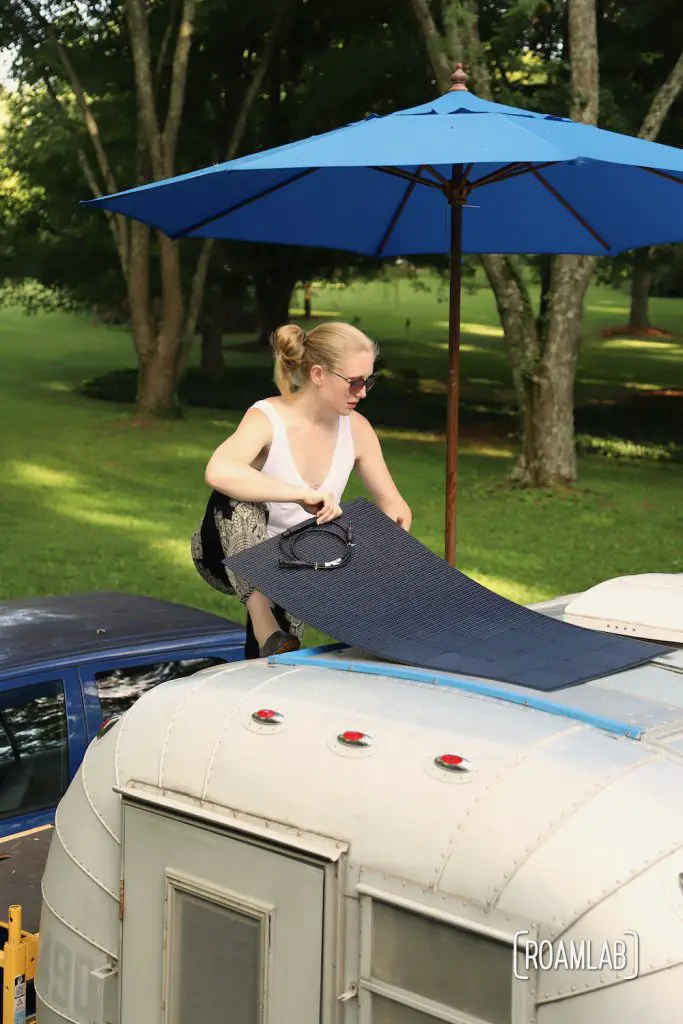
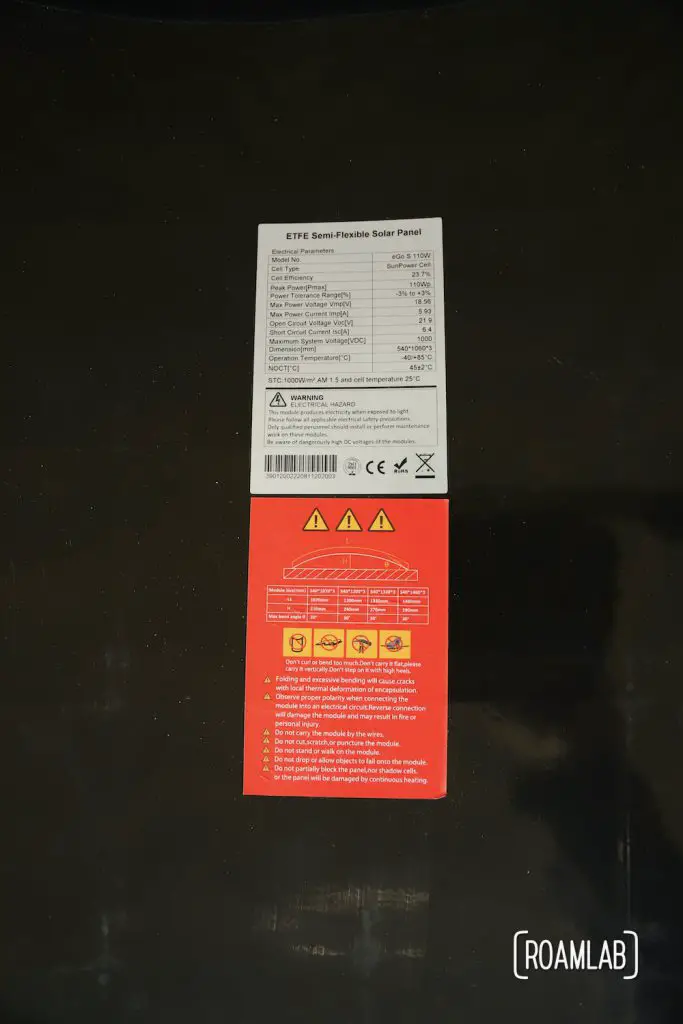
Conclusion
Overall, I can’t overstate how much of our choice is a contextual one. If we had a flat roof, we likely would have selected solid solar panels. If we were more casual campers, we may have chosen cheap unmounted panels. If this was some one-time-use experimental rig, we might have chosen some crazy custom panel dimensions to get the most coverage, without concern for replaceability. It’s practical and contextual concerns that drive our choices, as it should be for anyone shopping for solar panels.


